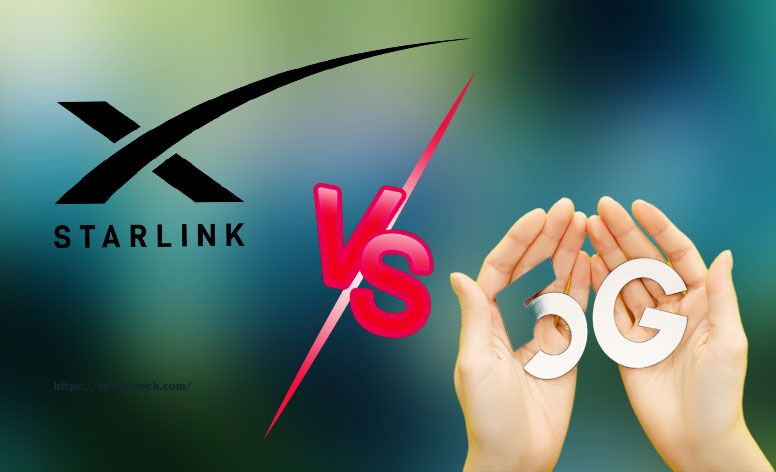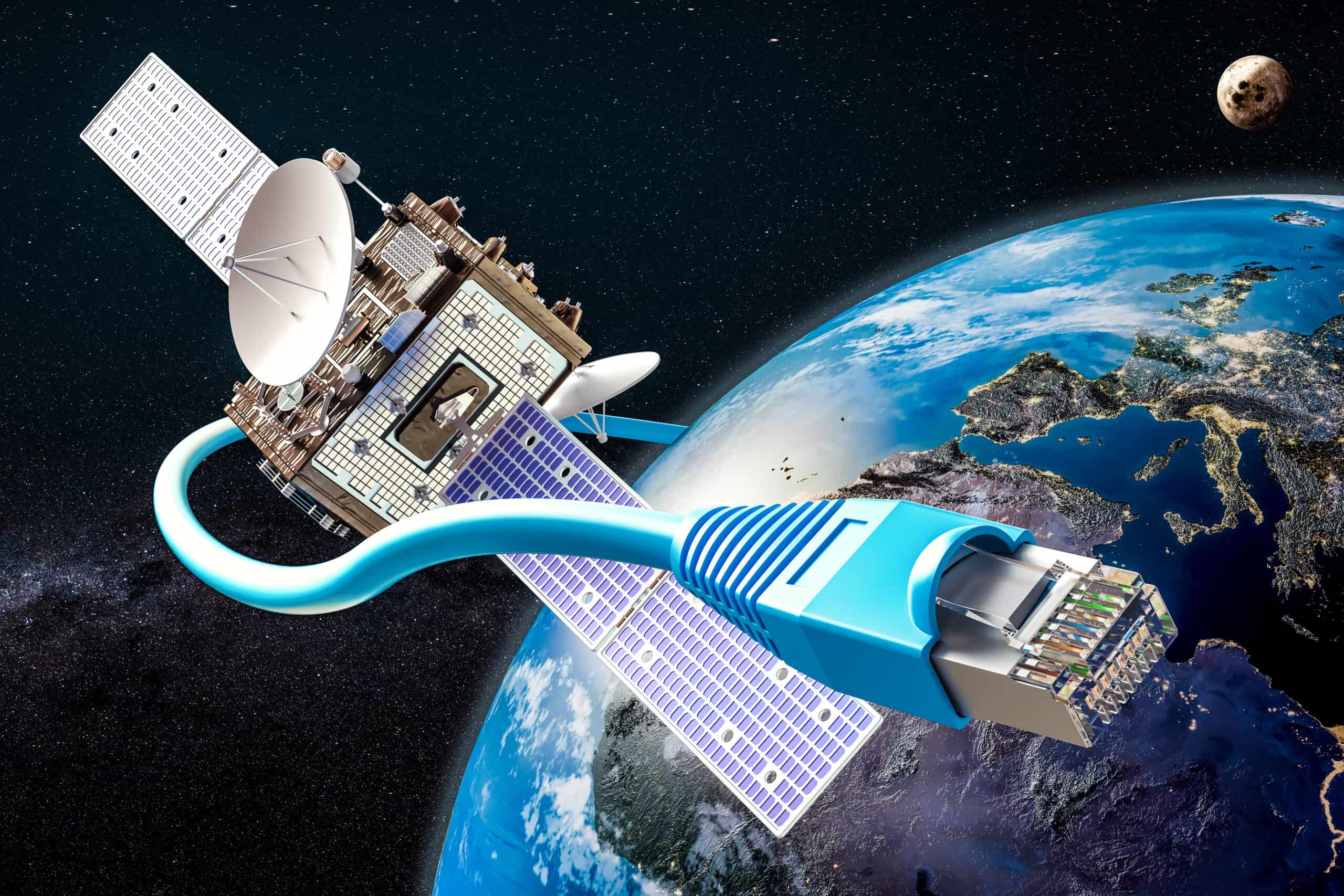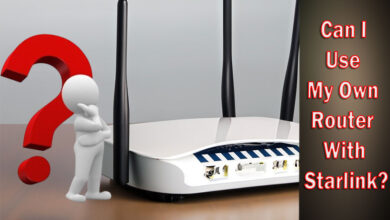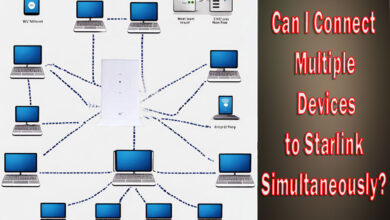How Does Starlink Compare to 5G Internet?

Starlink provides satellite internet connectivity while 5G Internet is a terrestrial wireless network. Starlink is a revolutionary satellite internet constellation project developed by SpaceX.
It aims to provide global broadband coverage using thousands of low Earth orbit (LEO) satellites. On the other hand, 5G Internet refers to the fifth generation of wireless technology that allows for faster, more reliable connectivity on mobile devices and fixed networks.
While both Starlink and 5G Internet offer high-speed internet access, they have different infrastructures. Starlink relies on a network of satellites, making it accessible in remote areas where traditional internet infrastructure is lacking. 5G, on the other hand, relies on a network of cellular towers, offering faster speeds and lower latency in urban areas. We will explore the differences and similarities between Starlink and 5G Internet, and discuss their potential impact on internet connectivity. So, let’s dive in!
1. Understanding Starlink Satellite Internet Technology
Starlink satellite internet technology is revolutionizing the way we connect to the internet. With its vast network of low Earth orbit satellites, Starlink aims to bring high-speed internet to even the most remote areas of the world. The system works by beaming internet signals from these satellites to a dish installed at the user’s location.
This dish then relays the signal to a router, providing a reliable internet connection. Starlink’s constellation of satellites works together to cover a large area, ensuring seamless connectivity. This technology offers a promising alternative to traditional internet providers, as it overcomes the limitations of infrastructure like cables and towers.
Users can expect faster speeds and lower latency compared to other options like 5G internet. Starlink is steadily expanding its coverage and has already gained attention for its potential to bridge the digital divide globally.
2. Unveiling 5G Internet Technology
The introduction of 5G internet technology has brought forth numerous benefits and limitations. This advanced technology offers faster speeds and low latency, revolutionizing the way we connect and communicate. With download speeds reaching up to 10 gigabits per second, users can enjoy seamless streaming, quick file downloads, and real-time gaming experiences.
Additionally, 5G internet technology enables the connection of multiple devices simultaneously, supporting the growing Internet of Things (IoT) ecosystem. However, it is important to note that 5G has limitations in terms of coverage and infrastructure requirements. Due to its higher frequency bands, 5G signals have a shorter range and struggle to penetrate obstacles like walls and buildings.
Moreover, the implementation of 5G networks requires extensive infrastructure upgrades, making it a costly endeavor for network providers. Despite these limitations, 5G internet technology holds immense potential in transforming industries and enhancing our digital experiences.
3. Comparing Speed And Performance
When comparing the speed and performance of Starlink and 5G internet, several factors come into play. First, both technologies rely on different types of infrastructure. Starlink, being a satellite-based internet system, can offer internet access in remote areas where traditional infrastructure is lacking.
On the other hand, 5G internet relies on cell towers and requires a dense network of antennas for optimal performance. Additionally, the distance between the user and the source can affect the speed and latency. While Starlink promises high speeds and low latency due to its satellite network, 5G internet can offer blazing-fast speeds in areas with a strong network coverage.
Finally, the number of users connected to a network can also impact the speed. With Starlink’s plan to launch thousands of satellites, it aims to provide reliable and fast internet to a larger user base. Overall, both technologies have their strengths and limitations, making it important to consider specific needs and availability when choosing between Starlink and 5G internet.
4. Coverage And Accessibility
Starlink and 5G internet have distinct geographic coverage and accessibility differences. Starlink, with its satellite-based network, offers global coverage, reaching even the most remote areas. In contrast, 5G internet relies on cellular towers and is primarily available in urban centers.
While 5G is expanding, it may take longer to reach rural regions due to infrastructure challenges. This disparity in accessibility may disadvantage rural residents who heavily rely on the internet for various needs. On the other hand, Starlink’s widespread coverage could bridge the digital divide, providing reliable internet access to rural communities.
As technology advances, it will be interesting to see how these two connectivity options continue to evolve and impact different regions.
5. Cost And Affordability
Starlink and 5G internet offer different affordability factors. The cost of Starlink, Elon Musk’s satellite internet service, is $99 per month, with a one-time equipment fee of $499. This makes it accessible for users looking for reliable internet in remote areas.
On the other hand, 5G internet services are offered by various providers, with pricing plans that vary depending on the region and the provider. Some providers may offer affordable plans, while others may have higher costs. Additionally, the cost of 5G infrastructure development and implementation needs to be considered.
Both options have their own advantages and disadvantages in terms of affordability, and it ultimately depends on the specific needs and location of the user.
6. Reliability And Stability
Reliability and stability are crucial factors when comparing Starlink satellite internet and 5G technology. Both technologies face their own challenges and issues. Starlink’s reliance on satellites orbiting Earth introduces potential obstacles like signal interference due to weather conditions or physical obstructions.
On the other hand, 5G may encounter network congestion in densely populated areas, resulting in decreased reliability. Additionally, Starlink’s low Earth orbit satellites offer a distinct advantage in terms of reduced latency compared to traditional satellite internet. However, 5G boasts faster speeds and lower latency when accessible.
It’s important to consider these factors and individual needs when evaluating the reliability of Starlink satellite internet versus 5G technology. Whether it’s the stability of satellite signals or the consistency of cellular connectivity, both options have their own considerations.
7. Future Prospects And Adoption
Starlink and 5G internet have the potential for significant future advancements. Both technologies could revolutionize the way we connect and access information. However, several factors could determine their widespread adoption. One crucial aspect is the availability of infrastructure and coverage.
For both Starlink and 5G, expansion into rural and remote areas is crucial for their success. Additionally, factors such as cost and accessibility will play a significant role in determining their adoption rates. Affordability will be a key factor in attracting users to these technologies.
Moreover, the ease of installation and use will also be critical. If Starlink and 5G can provide seamless and user-friendly experiences, they are more likely to achieve wide-scale adoption. Overall, while both technologies show promise, their future prospects rely on overcoming these challenges and meeting the evolving needs of users.

Credit: history-computer.com
Frequently Asked Questions On How Does Starlink Compare To 5G Internet?
How Does Starlink Compare To 5G Internet?
Starlink and 5G internet are different technologies that offer high-speed connectivity. While Starlink relies on a network of satellites to provide global coverage, 5G internet is ground-based, using cellular towers. Starlink’s advantage lies in its ability to reach remote areas, whereas 5G is focused on urban environments.
Ultimately, the choice depends on your location and needs.
Is Starlink Faster Than 5G?
In terms of speed, Starlink has the potential to outperform 5G in areas with poor internet infrastructure. With speeds reaching up to 150 Mbps currently, Starlink aims to provide low latency and high bandwidth. However, 5G is designed for urban areas and can deliver lightning-fast speeds, reaching up to 1 Gbps.
The actual speed experienced may vary depending on multiple factors.
Is Starlink Available Worldwide?
Yes, Starlink is designed to provide internet coverage worldwide. Its satellite network allows it to reach remote areas where traditional internet service providers are unable to provide reliable connectivity. Starlink’s goal is to bridge the digital divide and ensure global internet access, particularly in underserved regions.
However, coverage availability may vary as the network is still being deployed.
Conclusion
To sum up, Starlink and 5G Internet both offer significant advantages in enhancing global connectivity. While 5G holds promise for delivering ultra-fast speeds and low latency, Starlink provides a unique solution for reaching underserved rural areas and remote regions. With its expansive satellite network, Starlink has the potential to bridge the digital divide, bringing reliable high-speed internet to previously inaccessible places.
However, it’s important to note that Starlink’s reliance on satellites may result in occasional service interruptions, whereas 5G offers more consistent and widespread coverage in urban areas. Ultimately, the choice between Starlink and 5G will depend on individual needs and circumstances.
As technology advances, both options are likely to play significant roles in shaping the future of internet connectivity, ensuring that people across the globe can stay connected and benefit from the vast opportunities offered by the digital world.



